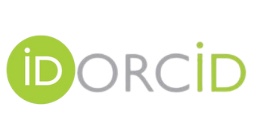Cephalometric modifications in patients with Class ΙΙ division 1 treated with Twin Blocks. Polyclinic “Juan Manuel Páez Inshaustiâ€. February 2013 – January 2014
Keywords:
cephalometric modifications, twin blocks, class II division 1Abstract
To treat Class II Division 1 syndrome caused by mandibular retrognathism  and the patient is at an age when he is growing, the therapeutic method of mandibular advancement is used to eliminate this discrepancy between the bony bases, whenever the patient doesn’t present a prevalence of the vertical growing of the face. In order to evaluate cephalometric changes with Twin Blocks in the treatment of Class ΙΙ division 1 syndrome, a quasi-experimental intervention study of the before and after type without control group was performed in the patients who entered the orthodontic practice of  policlinic Juan Manuel Páez Inshausti, New Gerona, with ages between 11 and 14 years in the period covered between February 2013 and January 2014 with Syndrome of Class II division 1, where an universe of 8 patients was used. The basic twin blocks was set and the obtained changes were determined at six months of initiating the active stage of treatment by means of the cephalometric test of the lateral teleradiographs of skull. At six months the most significant cephalometric changes were the reduction of SNA and the increase of SNB with a significant reduction of ANB in 3.25°. The mandibular length increased significantly in 6.9 mm the same as the lower facial height in 3.5º. A significant retrusion of the upper incisor was achieved.The twin blocks are an effective method for the treatment of this malocclusion.Downloads
References
Lazo Amador Y, Otaño Laffitte G, Marín Manso G, Gutiérrez Rojas A. Proporción divina en pacientes con síndrome de clase II división 1. Rev Cubana Estomatol [revista en la Internet]. 2012 Jun [citado 2014 Ago 18]; 49(2): 117-127. Disponible en: http://scielo.sld.cu/scielo.php?script=sci_arttext&pid=S0034-75072012000200005&lng=es
Alencar Maia S, Palomino Gómez S, Sampaio Dib L, Boamorte Raveli T, Barnabé Raveli D. Tratamiento de maloclusión clase II división 1 con el aparato de herbst tipo férula, después del pico de crecimiento puberal. Acta Odontológica Venezolana [revista en la Internet]. 2011;49(2). [Citado 2014 Sep. 2]: Disponible en: https://www.actaodontologica.com/ediciones/2011/2/art-18/
Cerero Omelchuk Irina, Puig Ravinal Luis Emilio, Romero Zaldívar Esperanza. Modificaciones clínicas y cefalométricas en pacientes Clase II división 1 tratados con Bloques Gemelos. AMC [Internet]. 2009 Jun [citado 2015 Mayo 24];13(3). Disponible en: http://scielo.sld.cu/scielo.php?script=sci_arttext&pid=S1025-02552009000300008&lng=es.
Yirui N, Hong Z. Effect on functional appliances on mandibular growth on skeletal Class II malocclusion: A systematic review. West China Journal of Stomatology [revista en la Internet]. 2011 abril [citado 2015 Mayo 24];29(04):384-88. Disponible en: http://www.hxkqyxzz.net/EN/abstract/abstract151.shtml#
Crespo Tineo ZA. Tratamiento temprano de las maloclusiones Clase II División 1 [tesis]. Caracas: Universidad Central de Venezuela: Facultad de Odontología; 2002. [citado 2014 Sept 2]. Disponible en: http://saber.ucv.ve/bitstream/123456789/6033/1/TESIS.pdf
Curbeira Hernández, E. Mora Pérez, C. Activador abierto elástico de Klammt y bloques gemelos en el tratamiento de la maloclusión de Clase II. Medisur 2009; 7(1). [Citado 2014 Ago 18] Disponible en: http://medisur.sld.cu/index.php/medisur/article/viewArticle/487
Asián Norberto DJ, Silva-Esteves Raffo F. Efectividad del uso del Bionator en la maloclusión clase II división 1: reporte de Caso. Odontol. pediatr. (Lima) [revista en la Internet]. 2011 ene-jun [Citado 2014 Sep. 2];10(1):62-9. Disponible en: http://pesquisa.bvsalud.org/brasil/resource/pt/lil-601429
Saldarriaga-Valencia JA, Alvarez -Varela E, Botero-Mariaca PM. Tratamientos para la maloclusión Clase II esquelética combinada. CES odontol. [serial on the Internet]. 2013 July [cited 2014 Oct 07] ; 26( 2 ): 145-159. Available from: http://www.scielo.org.co/scielo.php?script=sci_arttext&pid=S0120-971X2013000200013&lng=en.
Rodríguez Flores JM. Tratamiento no quirúrgico de la maloclusión clase II de ángulo alto y mordida abierta. Revista Latinoamericana de Ortodoncia y Odontopediatria [revista en la Internet]. 2010 junio [citado Agosto 31 2014]. Disponible en: https://www.ortodoncia.ws/publicaciones/2010/art-14/
Carolina Rodríguez-Manjarrés C, Padilla-Tello MR. Manejo temprano de la maloclusión clase II división 2. Revisión de la literatura. Revista Latinoamericana de Ortodoncia y Odontopediatria [revista en la Internet]. Rev. estomatol. 2015 [citado Agosto 31 2014];23(1):57-63 Disponible en: http://bibliotecadigital.univalle.edu.co/bitstream/10893/9143/1/Manejo%20temprano.pdf
Marques F, Kelmer F, Vierira J. Activator elastic open in klammt treatment of bad occlusion class II division 1. JSCD. 2015;7(1):20-3.
Marques Silva L, Costa Armond Mônica, Ramos Jorge ML, Gonçalves Vieira de Andrade R, Bolognese AM. Correlations between dentoskeletal variables and deep bite in Class II Division 1 individuals. Braz. oral res. [revista en la Internet]. 2011 Feb [cited 2014 June 19] ; 25( 1 ): 56-62. Available from: http://www.scielo.br/scielo.php?script=sci_arttext&pid=S1806-83242011000100010&lng=en.
Published
How to Cite
Issue
Section
License
Copyright (c) 2015 Revista de Medicina Isla de la Juventud

This work is licensed under a Creative Commons Attribution-NonCommercial 4.0 International License.






